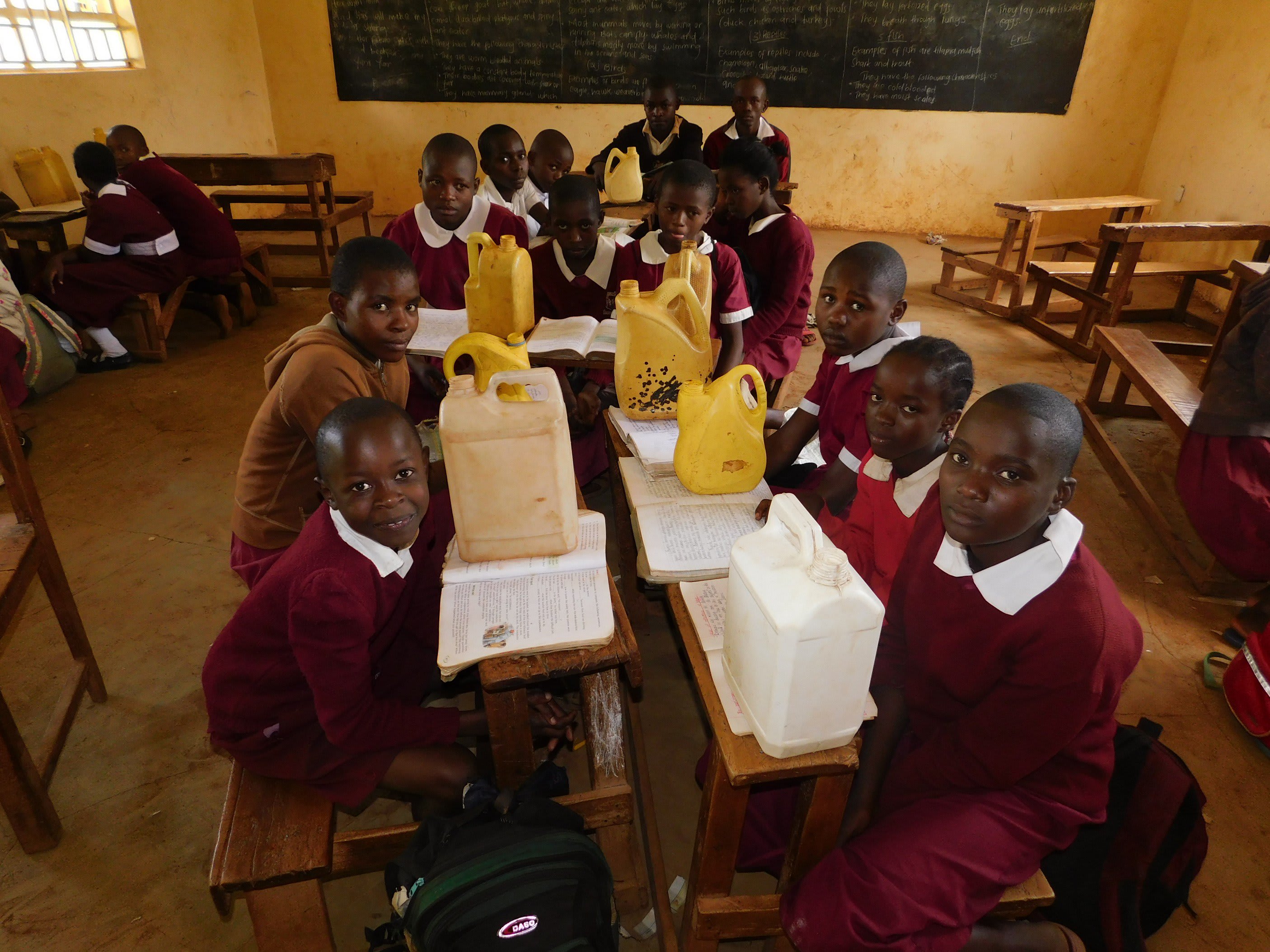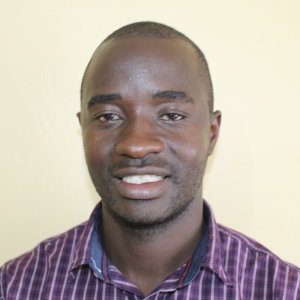We first became connected with Ebukhuliti Primary School thanks to the Head Teacher there, Mrs. Ruth Wulievei. Ruth said she was attracted to and liked the "amazing work" we had implemented in 2 neighboring schools, Esibuye Primary School and Ebusiratsi Special Primary School. "The good work of the organization impressed me. Therefore, we are also humbly requesting for the same WaSH facilities in our school," she said.
Ebukhuliti Primary School was started in 1950 but was closed in 1960 due to a low student population. It went through several openings and closures for the next 8 years. The candle for this institution got rekindled in the year 1968 and it has been growing ever since with hope, resilience, and love to support the school motto: "Hard work pays." The school has experienced exponential growth in population since 1968. Currently, the school population stands at 812 students, 20 teachers, and 3 support staff members. There are 17 classrooms, 1 kitchen, a large playing field, and an office sandwiched between classrooms on campus.
Ebukhuliti Primary School is located in a rural area that is generally peaceful. There are various types of vegetation planted within and without the school perimeter comprised of both indigenous and exotic species such as mango, neem, and eucalyptus trees. Most of the structures in the school are permanent, though some are very old, while the surrounding community has a mixture of permanent and semi-permanent buildings.
Most of the people in the surrounding community practice small-scale farming and run small enterprises for their livelihoods. Most family incomes here are low. Children from these families have to carry water to school every day. This they do as a ritual because the current and the only source of water that the school depends on is a protected spring that is 1.5 kilometers away from the school. This means that, more often than not, it is not breaking news when pupils are asked to break from class lessons to go and bring water from the spring.
The situation gets worse during dry seasons when the spring discharge reduces greatly. Thus, long queues are observed as the pupils have to scramble for water with the community members who depend on the same spring. The residents get upset by the students trying to fetch water, telling them that "the school should have its [own] water point".
To get to the spring, pupils must pass through several homes. This also demoralizes the students because they are exposed to the rest of their friends from other nearby schools, who describe the Ebukhuliti Primary students as "mobile spectacles" whenever they see them rushing to the spring for water. The learners carry all of this shame due to the lack of a better alternative to their water plight.

The school does not have any water storage containers. Thus, either water brought from the spring is used immediately or it is stored in the same jerricans it was fetched in. If it is set for drinking, the water is set aside for use without any treatment provided for it.
Due to the long distance students travel for water every day, many become exhausted during class lessons and a few fall asleep after this tiring walk. Even though a child does not fear to tread on the dangerous ground until they get hurt, it is obvious that the Ebukhuliti school community is hurting emotionally every time these learners have to stop class lessons in search of water from outside the school perimeter. This equals wasted class time and lower scores for students who miss important lessons. The time wasted also has great economic ramifications to the school because the school employees must be paid for work that sometimes is not done to standard since they must accompany the children to the spring every day.
A typical day at Ebukhuliti Primary School runs from 6:30 am to 5:00 pm. First, students report for their morning preps. Older students report first, then the younger ones join them at 7:20 am until 8:00 am when they enjoy their first 15-minute break. Normal lessons run from 8:15 am to 3:10 pm with breaks after every two 40-minute class lessons. Lunch break runs for 50 minutes ending by 2:00 pm. Cleaning of the school goes from 4:00 to 5:00 pm, when students are required to either use water they carried from home or run to the spring to fetch water one last time for cleaning purposes.
"When we teach pupils about hygiene, we are limited because some of the things we say lack room for practicality," said Head Teacher Mrs. Ruth Wulievei.
"C.S Lewis puts it plainly, 'We must lay before Him what is in us, not what ought to be in us.' But with lack of clean water, how can we even enforce the principles on handwashing, water safety, and personal hygiene when water - which is the most prerequisite commodity - is 1.5 kilometers away from us?"
"Most of the times we are disturbed about the safety of our students when we send them out for water. The young ones also do cry for water to quench their thirst. This happens even when there is nothing available to calm them with. No drop, and no hope."
The few latrines that currently exist at Ebukhulii Primary are being cleaned on a daily basis, but hardly since little water is available to do so. Another observation made was that most of the latrines do not guarantee privacy to the users; only the latrine doors for boys could be locked from the inside.
"It is disheartening that our school is still staring at the sanitation [facility] shortages that have exposed our learners to constant queuing during break times. Besides the shortages above, the school also lacks handwashing facilities to be used in practicing hygiene messages learned in class. The situation puts the school is a poor hygiene and sanitation state, " said Sanitation Teacher Lilian.
What we can do:
Rain Tank
Because of the high population at this school, we plan to construct a 75,000-liter rain tank to help alleviate the water crisis here. The school will help collect the needed construction materials such as sand, bricks, rocks, and water for mixing cement. We will complement their materials by providing an expert artisan, tools, hardware, and the guttering system. Once finished, this tank will begin catching rainfall that will be used by the school’s students and staff for drinking, handwashing, cooking, cleaning, and much more.
We and the school strongly believe that all of these components will work together to improve standards at this school, which will help lead to better student academic performance and will help unlock the opportunity for these students to live better, healthier lives.
Handwashing Stations
There is currently nowhere for students to wash their hands after using the latrines or before eating lunch, let alone the water to do so.
The student health club will oversee the 2 new handwashing stations we will provide, and make sure they are kept clean and in working condition. The club leaders will fill the handwashing stations with water daily and make sure they are always supplied with a cleaning agent such as soap or ash.
VIP Latrines
2 triple-door latrines will be constructed with local materials that the school will help gather. 3 doors will serve the girls while the other 3 will serve the boys. All of these new latrines will have cement floors that are designed to be easy to use and to clean. And with a rain tank right on school property, there should be enough water to keep them clean.
Training
We will hold training on improved hygiene, health, and sanitation habits for 2 days at this school. Our team of facilitators will use a variety of methods to train students and staff, including participatory hygiene and sanitation transformation (PHAST) and asset-based community development (ABCD). We will initiate a child-to-child (CTC) health club, which will prepare students to lead other students into healthy habits at school and at home. We will also lead lectures, group discussions, and provide illustrative handouts to teach health topics and ways to promote good hygiene practices within the school.

 Rainwater Catchment
Rainwater Catchment
 Rehabilitation Project
Rehabilitation Project



































